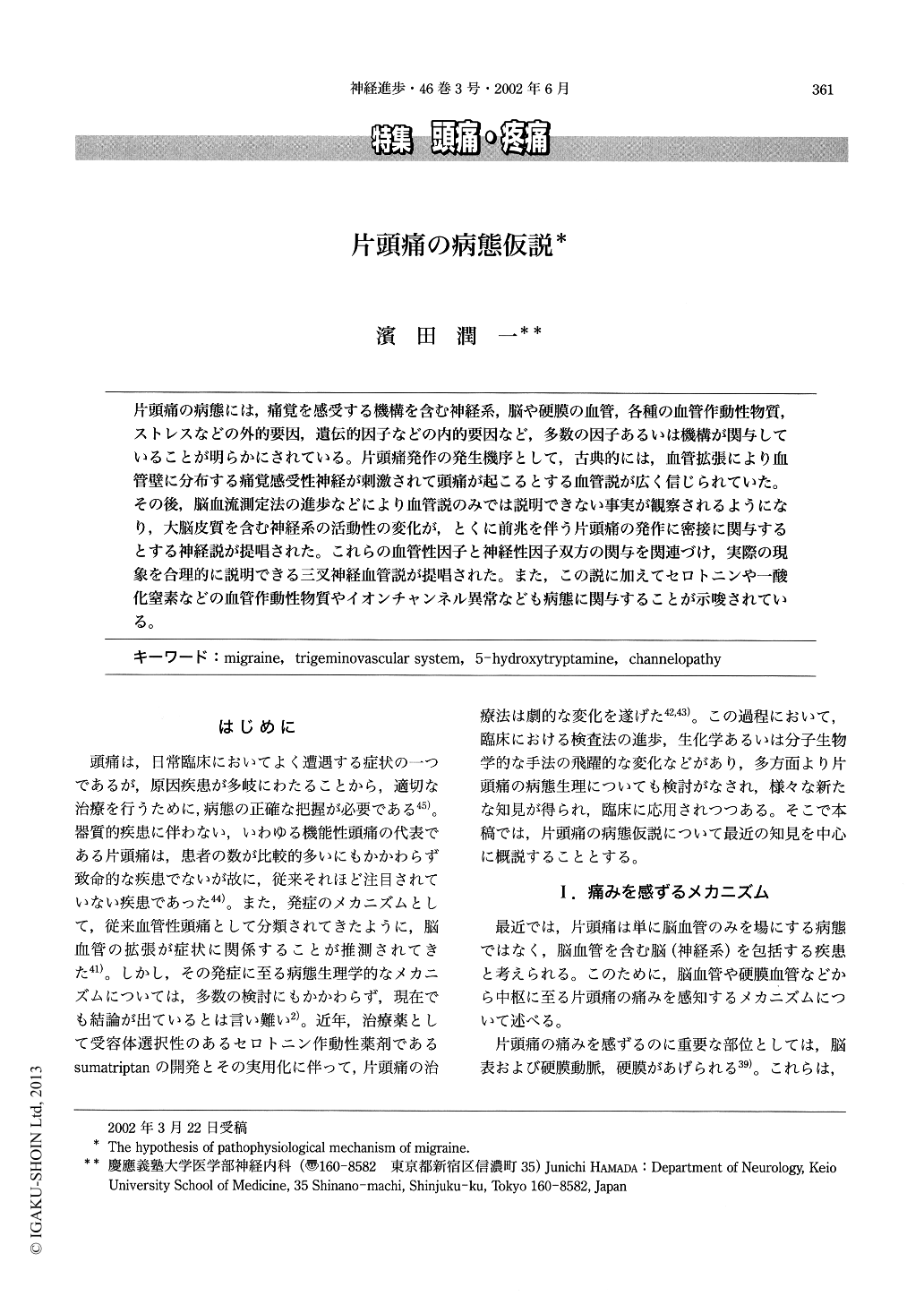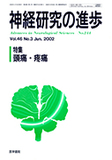Japanese
English
- 有料閲覧
- Abstract 文献概要
- 1ページ目 Look Inside
片頭痛の病態には,痛覚を感受する機構を含む神経系,脳や硬膜の血管,各種の血管作動性物質,ストレスなどの外的要因,遺伝的因子などの内的要因など,多数の因子あるいは機構が関与していることが明らかにされている。片頭痛発作の発生機序として,古典的には,血管拡張により血管壁に分布する痛覚感受性神経が刺激されて頭痛が起こるとする血管説が広く信じられていた。その後,脳血流測定法の進歩などにより血管説のみでは説明できない事実が観察されるようになり,大脳皮質を含む神経系の活動性の変化が,とくに前兆を伴う片頭痛の発作に密接に関与するとする神経説が提唱された。これらの血管性因子と神経性因子双方の関与を関連づけ,実際の現象を合理的に説明できる三叉神経血管説が提唱された。また,この説に加えてセロトニンや一酸化窒素などの血管作動性物質やイオンチャンネル異常なども病態に関与することが示唆されている。
The exact pathophysiological mechanism of migraine remains unclear. There are three hypotheses concerning this mechanism i. e. (1) vascular theory, (2) neuronal theory and (3) trigeminovascular theory. The vascular theory was that migrainous headache is due to marked dilatation of cerebral arteries and following activation of perivascular pain-sensitive nerves. In 1980s, many studies to measure regional cerebral blood flow in migraine patients were performed. From these results in some studies, there were much discrepancies from the point of 'classical' vascular theory.

Copyright © 2002, Igaku-Shoin Ltd. All rights reserved.


